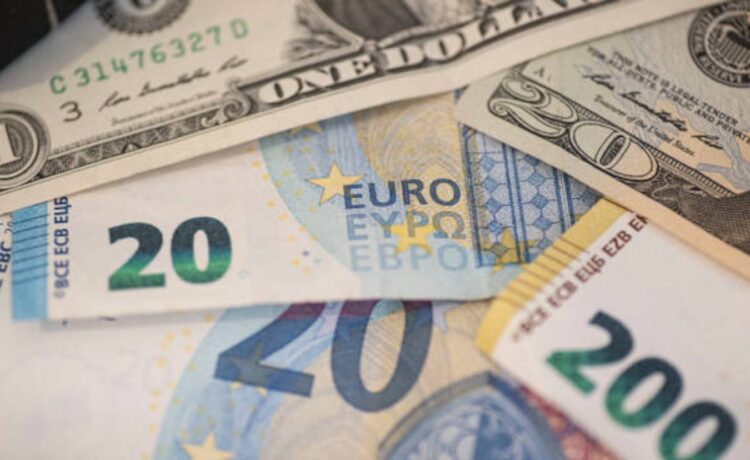As President Donald Trump continues to alter his tariff strategy, the US Dollar has taken a beating.
After news broke on Saturday, April 12, that electronics and semiconductors would be excluded from the 145 percent tariffs imposed on China, the dollar will likely regain some of its power when trading begins on Monday. Nevertheless, over the last month, the dollar’s value compared to the Euro has dropped 4.3 percent ($1 equal to €0.88), and since the beginning of the year, it is down 9.2 percent ($1 equal to €0.97).
Financial experts at ING, the Dutch banking giant, warn of a “confidence crisis” in the US Dollar. Sentiments among foreign and domestic investors mirror those of consumers in the US, whose confidence in the economy is inching closer to the lowest levels since the 1950s, according to recent reporting from The Wall Street Journal.
“The question of a potential dollar confidence crisis has now been definitively answered – we are experiencing one in full force,” writes Francesco Pesole, an ING foreign exchange strategist.
The analysts explain that the decrease in the power of the dollar has been influenced by a “radical shift away from US assets,” noting that investors were selling “both equities and Treasuries.”
President Trump’s move to impose tariffs on key trading partners, followed by his backtracking, is hurting the dollar’s reputation. But that is not the only policy in Washington concerning investors in Europe.
Rebuilding confidence is also hampered by the budget resolution passed by Republicans in the House of Representatives, with Pesole arguing that it “is adding another layer of risk premium to risk assets and Treasuries.” Additionally, the uncertainty generated by the 90-day pause on the most punitive tariffs on most trading partners may keep foreign investors away as no one knows what will happen if the three-month period comes and goes without any new trade deals hammered out.
What does a weak dollar mean?
The news of a weaker dollar is good news for Europeans traveling to the US or otherwise looking to purchase US goods. Buyers with Euros will be able to buy more than they otherwise would have for the same price because the exchange rate is more favorable.
Imagine a European importer who is looking to purchase almonds from the US. Assuming the price of a pound of almonds doesn’t change, the value in Euros will drop. If almonds are sold for $150 for 25 pounds, and the US dollar weakens against the Euro, the amount in Euros will fall.
Today, $150 is worth €132.04, while a year ago, when $1 was equal to €0.94 Euros, the 25 pounds of almonds would have cost €141. The savings of €10 may not seem like a huge savings, but when we think about a company buying hundreds of pounds of almonds, they begin to add up.
However, for US consumers, the opposite effect takes place.
Shoppers looking to purchase a bag or perfume on their trip to Italy or France will pay more today than they would have a year ago. Today, a €2,000 designer bag would cost around $2271.95, but a year ago, it would have been around $2,140 when the dollar was in a stronger position.
The same is true for foreign exports in markets where the local currency is stronger against the dollar. The dollar could weaken even further as the market responds to the 10 percent baseline tariff imposed on imports from nearly every country.
Get your game on! Whether you’re into NFL touchdowns, NBA buzzer-beaters, world-class soccer goals, or MLB home runs, our app has it all. Dive into live coverage, expert insights, breaking news, exclusive videos, and more – plus, stay updated on the latest in current affairs and entertainment. Download now for all-access coverage, right at your fingertips – anytime, anywhere.



